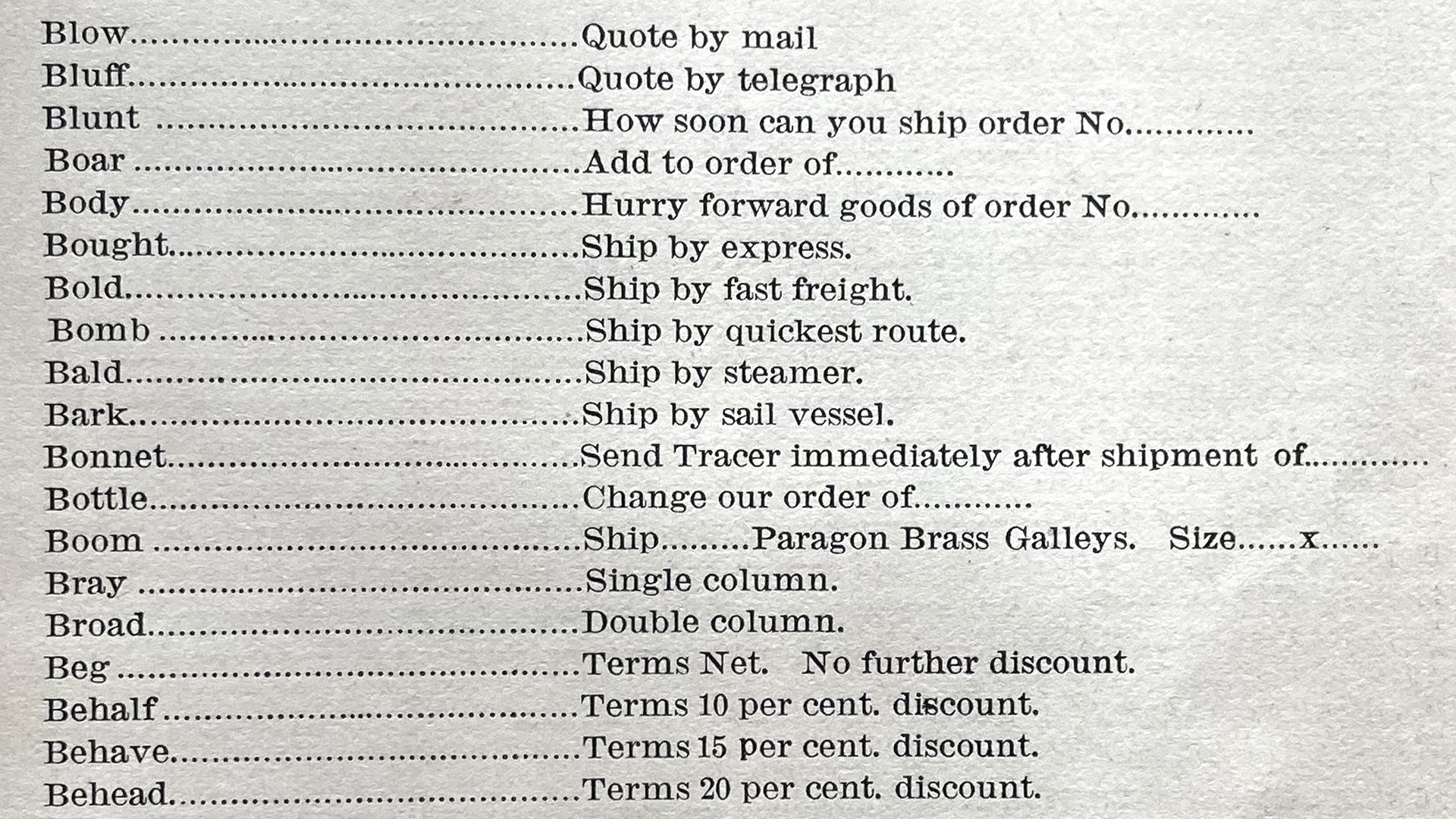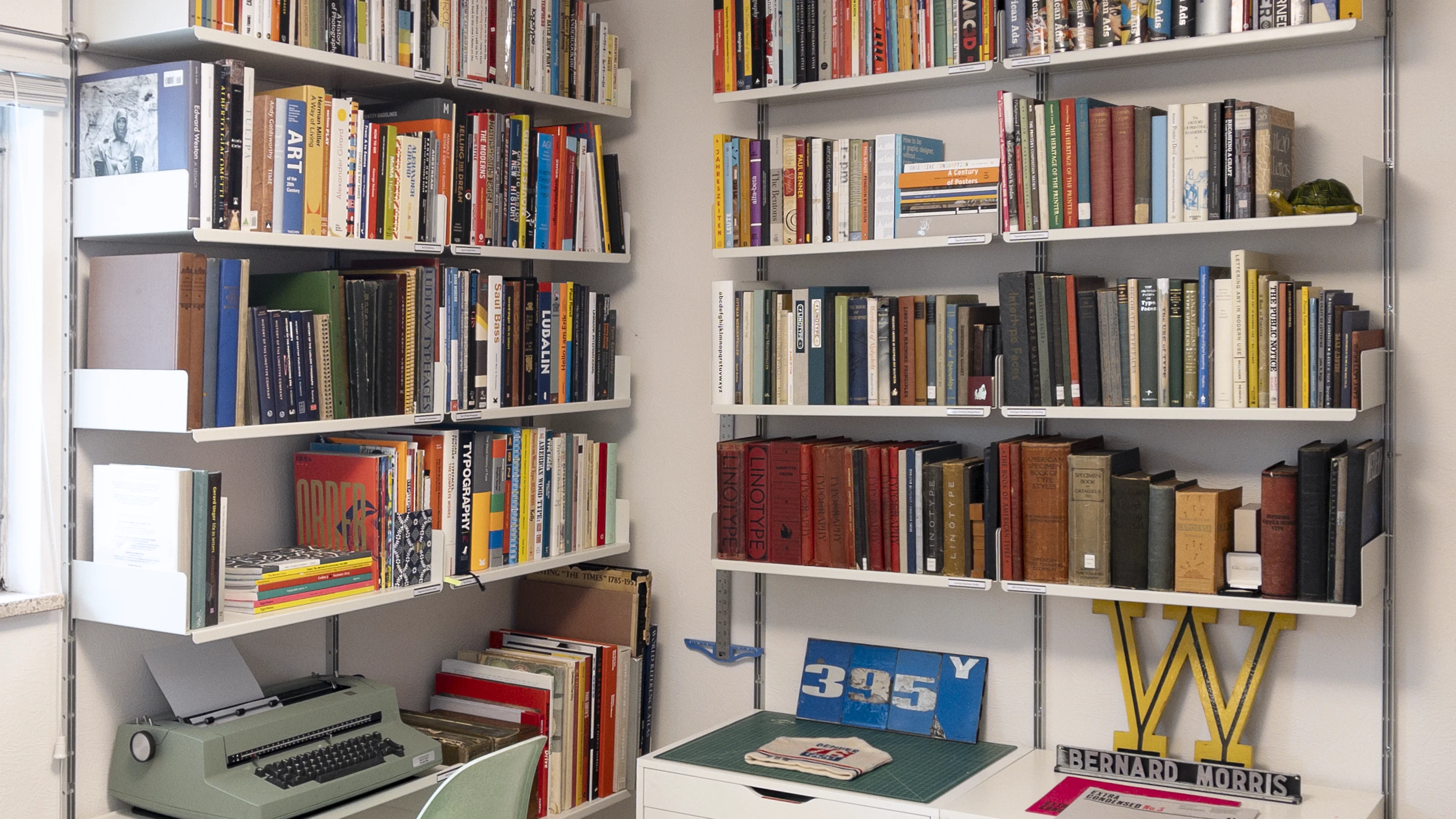
Cataloging My Books
My process of displaying and cataloging my collection
Published: 12 Jan 2023
Topics: Design, Typography, Linotype, History
TL;DR: I got some great bookshelves and cataloged my whole library online!
Calling it a “Library” Feels a Bit Pretentious…
At the risk of stating the obvious, books are very important to me. Maybe it is because my mother was a teacher or perhaps because I studied design and printing, but no matter the reason, I’ve been collecting art & design books since I started college 20 years ago. During the process of making Linotype: The Film, my collecting went into high gear—and I haven’t slowed down since.
To be clear: I don’t have the biggest collection of books, nor the most niche collection of books, but I’m proud of what I have and I’ve spent years displaying them in various ways (including an ill-advised flirtation with organizing them by color which was totally stupid).
Now, I have finally created a space in my home office that displays the books beautifully and functionally, so of course I’ve obnoxiously written a whole blog post about it.
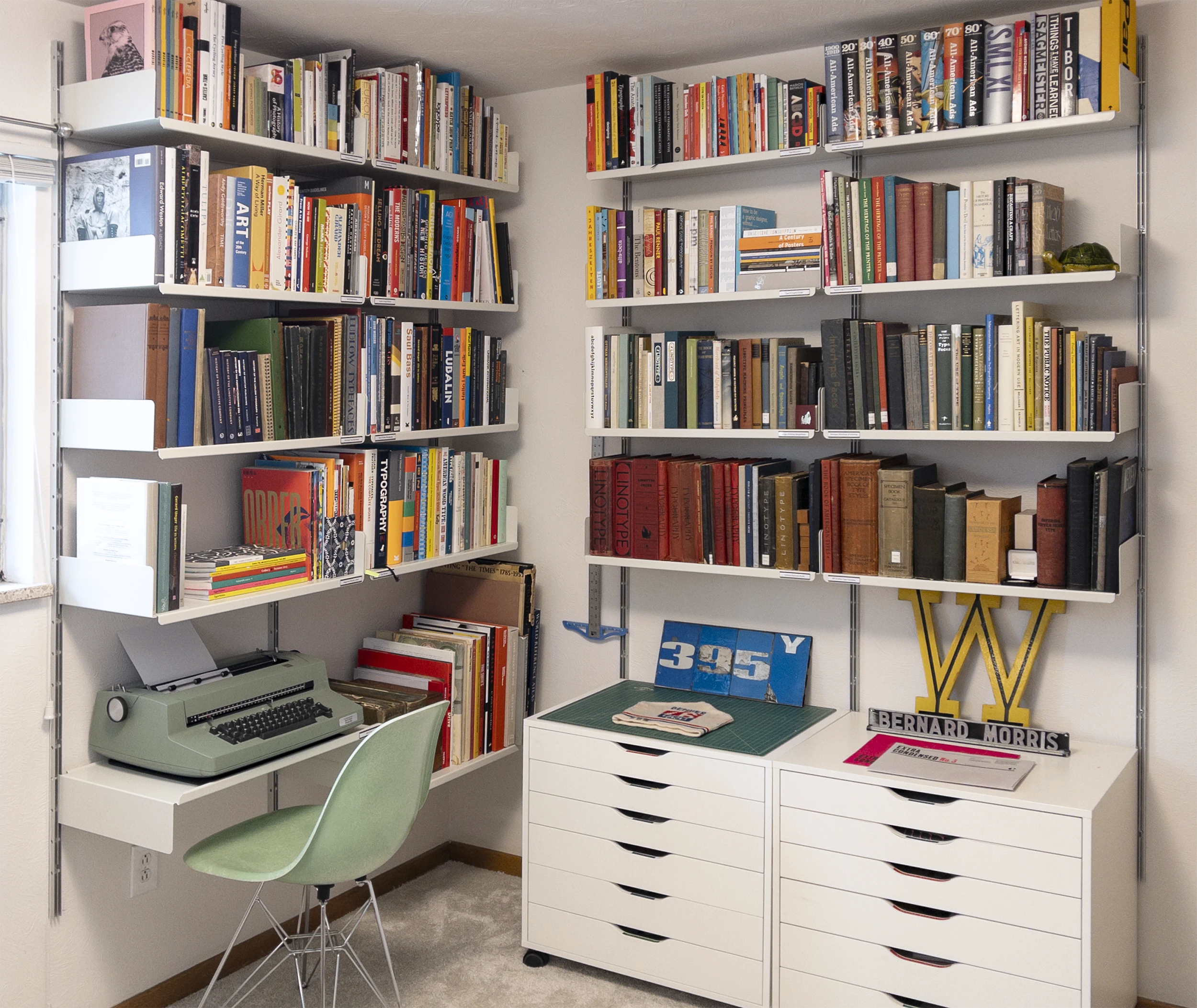
The Shelving System - Vitsœ 606
Honestly, I can’t remember when I saw my first set of Vitsœ 606 Universal Shelving System. It was easily 15 years ago, and likely on my first trip to New York City as an undergraduate design student from Missouri on our annual “Design Agency City Tour.” This was where us country-bumpkins got to meet the likes of Milton Glaser, Steven Heller, and some random “cool young studio” that was doing work for Camel cigarettes at the time and whose name I can no longer remember.
Seeing the shelving system, designed by Dieter Rams in 1960, gracing the studios of people with amazing libraries gave me something to dream towards as a young designer. To finally acquire these shelves as a mid-life designer feels (almost) like the wait was worth it. No more IKEA Billy shelves that sag under the weight of hundreds of heavy art and design books!
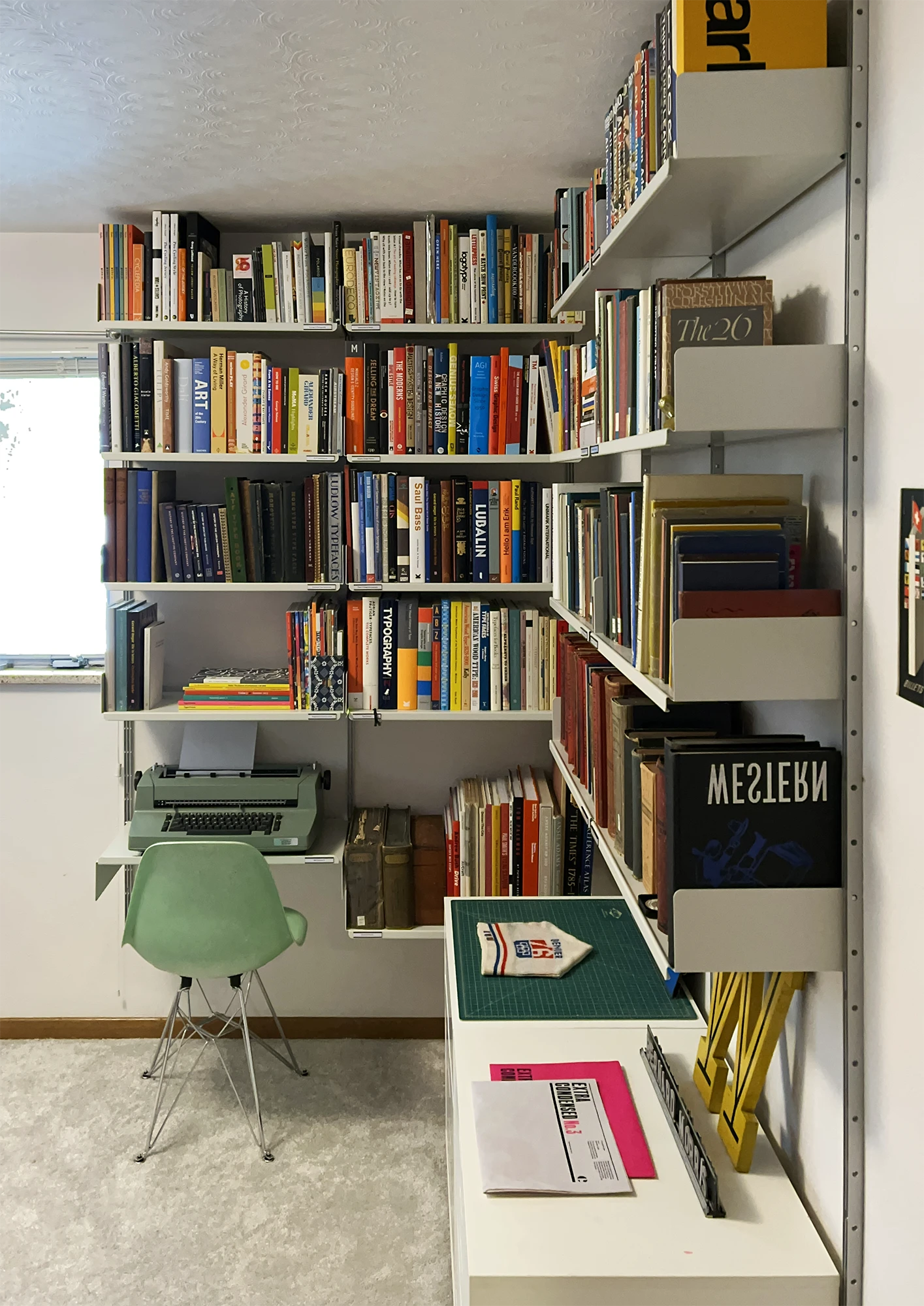
For full transparency, the Vitsœ 606 shelves are not cheap. This setup with 18 shelves cost $2,910 including shipping, but they are 100% worth the price. I’m confident I will have these shelves for the rest of my life. They will adapt to whatever future living situations I encounter and I can add to the system as my library continues to grow. Which is what they mean by their ethos of “Living better, with less, that lasts longer.”
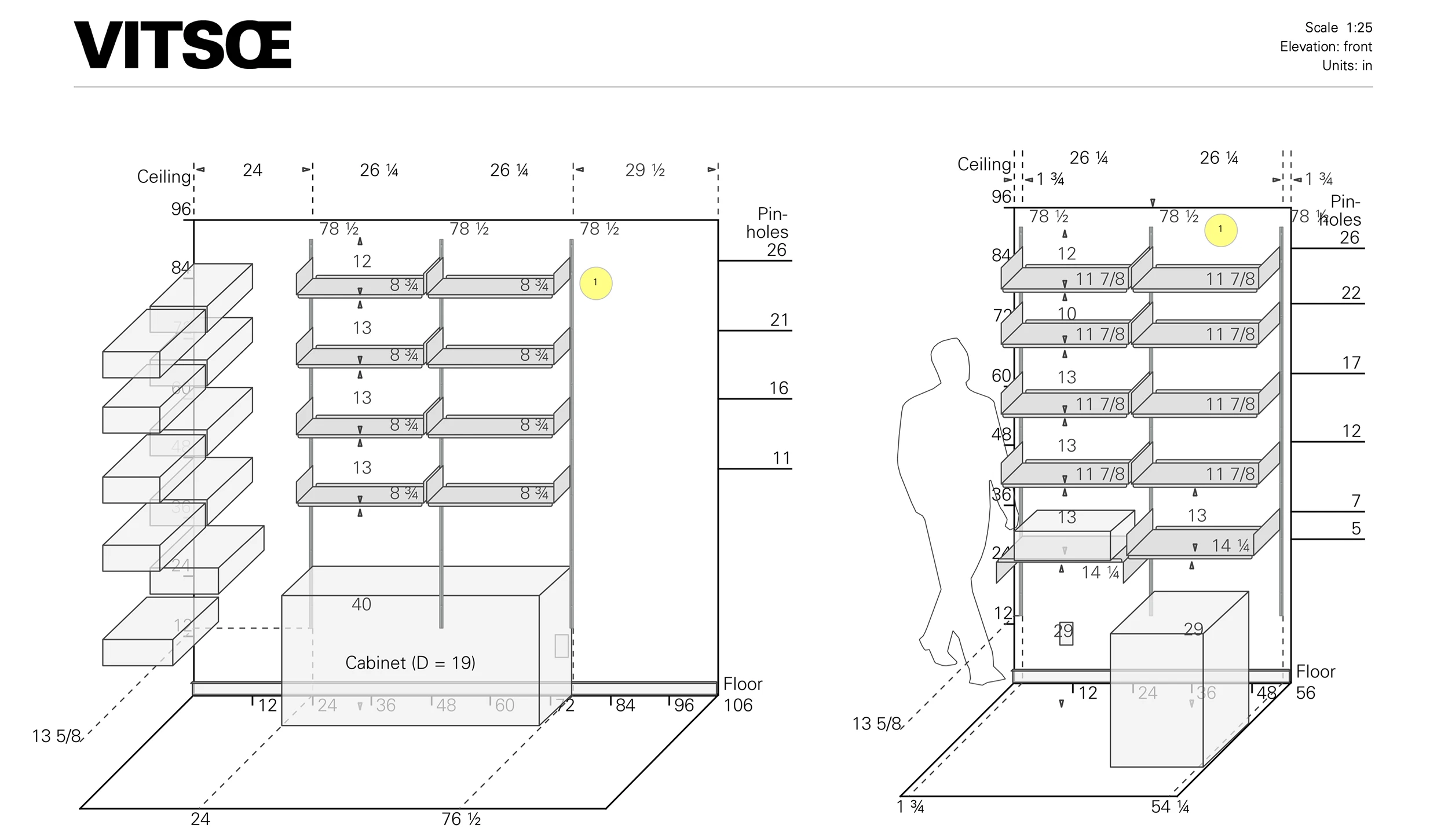
Additionally, working with Vitsœ was an absolute pleasure. I collaborated with Andrea at the Los Angeles store and she helped me refine exactly what I needed and didn’t need. The planning process was easy and I never felt pressured. Once the shelves arrived, installation was clearly explained and surprisingly easy.
One fair warning for people living in the United States: all Vitsœ orders are shipped from the U.K. and cross the ocean on a boat, so expect to wait several months for the shelves to arrive. I placed my order in mid-September and they arrived in mid-December. But again, worth the wait, I promise.
Cataloging the Books
Due to a major home remodel several months ago, I was forced to pack up all of my books into boxes and store them in my basement. This gave me the unique opportunity to unpack the books one box at a time, clearing out any books I no longer wanted, and the chance to catalog each book in my collection.
Is this obsessive? YES. Is this what I still did? ALSO YES.
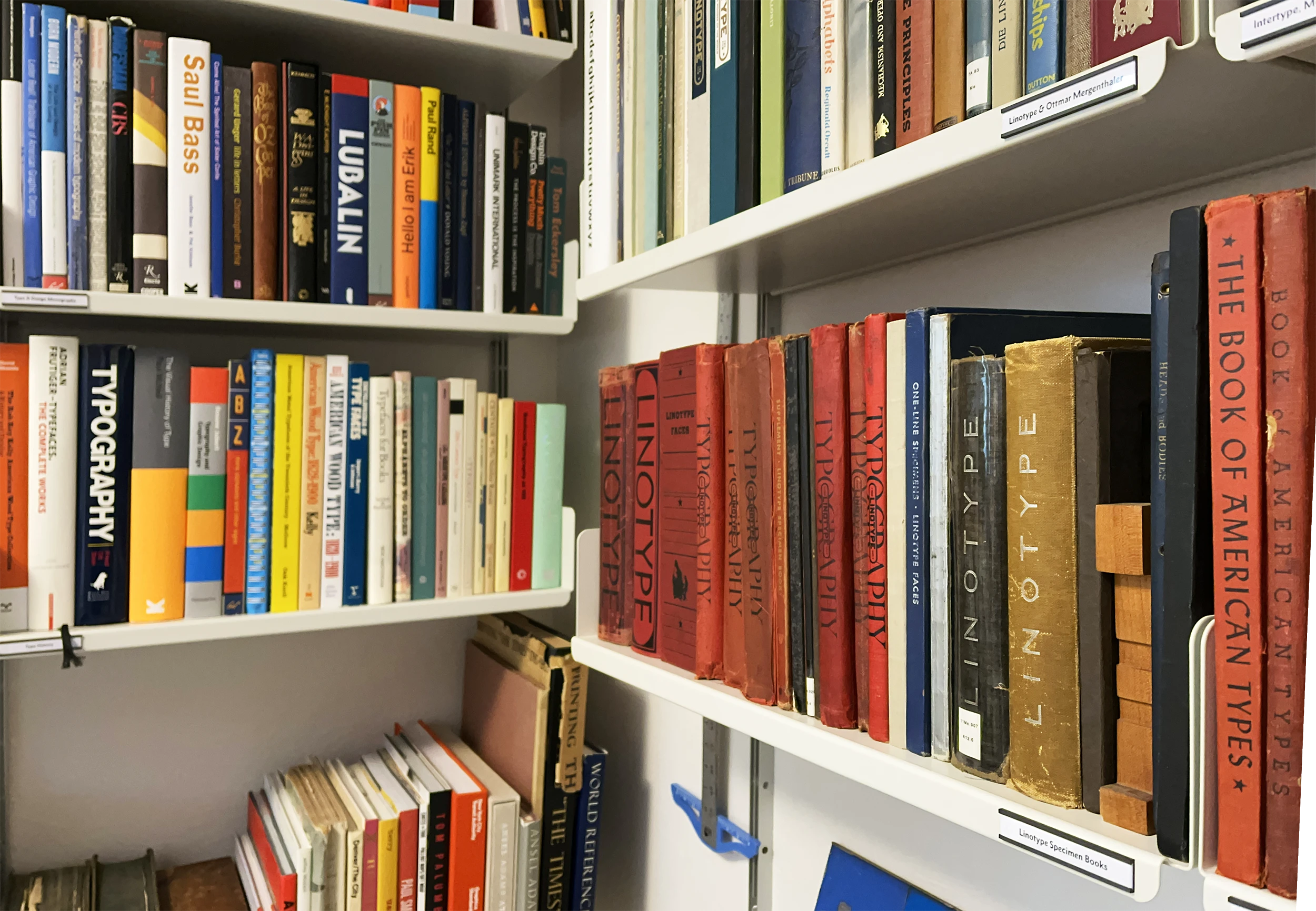
As my library has grown over the years, I wanted to keep track of what books I owned for two reasons:
- To stop myself from buying duplicates on eBay
- To have proof of ownership and know the approximate value of my collection for insurance reasons in the rare instance of fire or loss
After a fair amount of research, I settled on using the open source project Library Thing for an online, accessible database of my library. The fact that several people I know who also collect design books use Library Thing helped seal the deal. I suggest following Nick Sherman, Dan Reynolds, Erik Spiekermann, Indra Kupferschmid, Mota Italic, and Tania Raposo to see other great collections.
Organizing the Books
Because of the flexibility of the shelving, this is the first time that I’ve been able to properly organize my books by subject matter instead of by physical size. All of my Linotype specimen books can be together, all of my art & architecture books can be together, and all of my design monographs can be together. This helps with spontaneous discovery in the sense of, “Oh yeah, I forgot I had that book on Sister Corita Kent, let me give it another look.”

And because I am just that obsessive, I wanted to make shelf labels for each subject area that was flexible for the future. I found a ½ inch by 3 inch magnetic solution that fits the lip of the 606 shelves perfectly and is easily moved or changed in the future.
As I was unpacking my boxes, I used post-it notes to quickly label the subjects of each shelf. Once the subjects were finalized, I used Adobe Illustrator to lay out the labels, printed them out, and used a rotary paper trimmer to cut them to the precise size.
As for what font to use on the labels? That was easy: Metro Nova all day, every day.
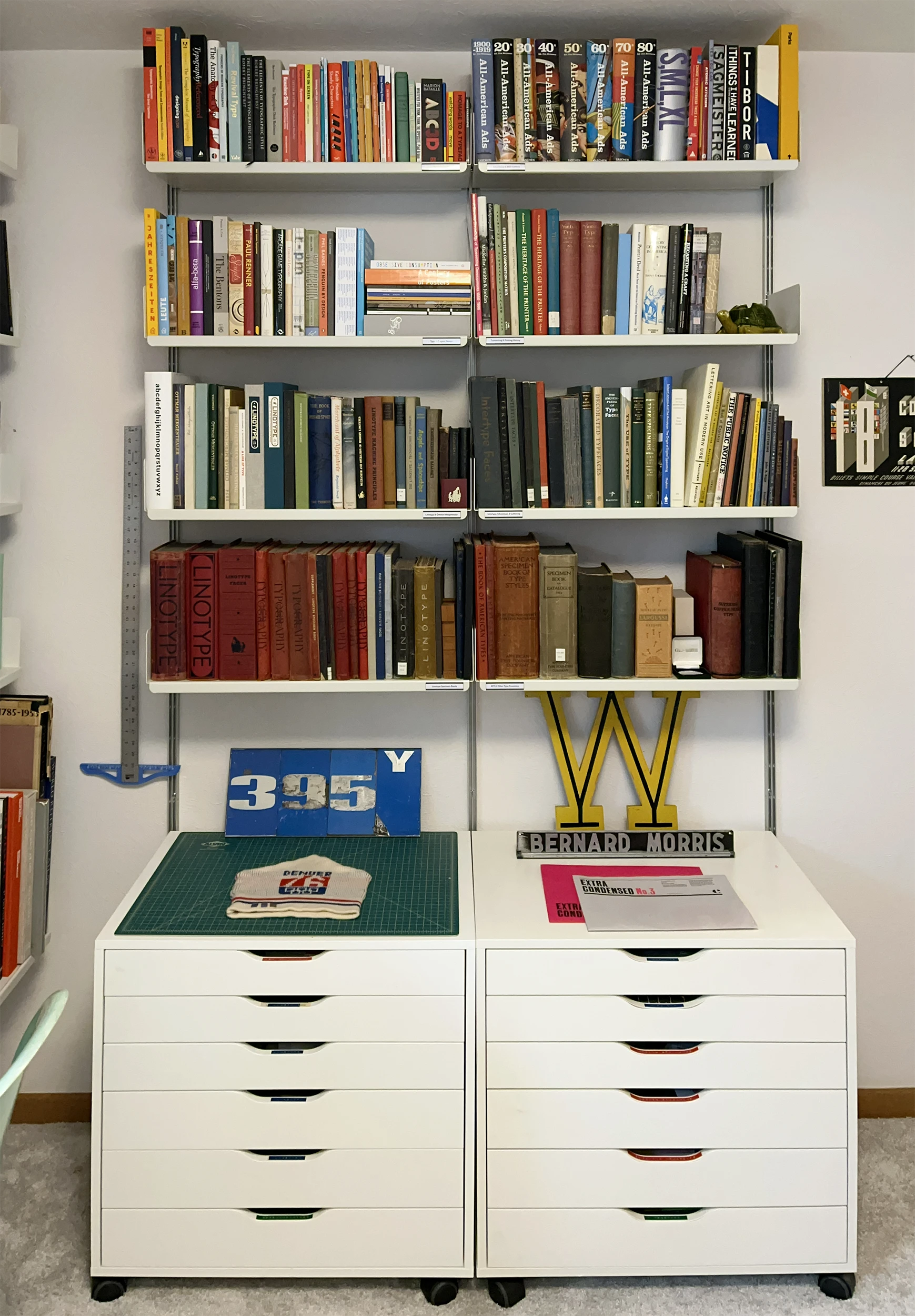
The Downside of LibraryThing
I am a big believer in open source projects and I think that Library Thing has great potential, but there is one downside that makes it quite frustrating to work with at this time: If you find a book in your friend’s library that you trust, you cannot simply add the same book to your own library even though you know that it is the exact same book.
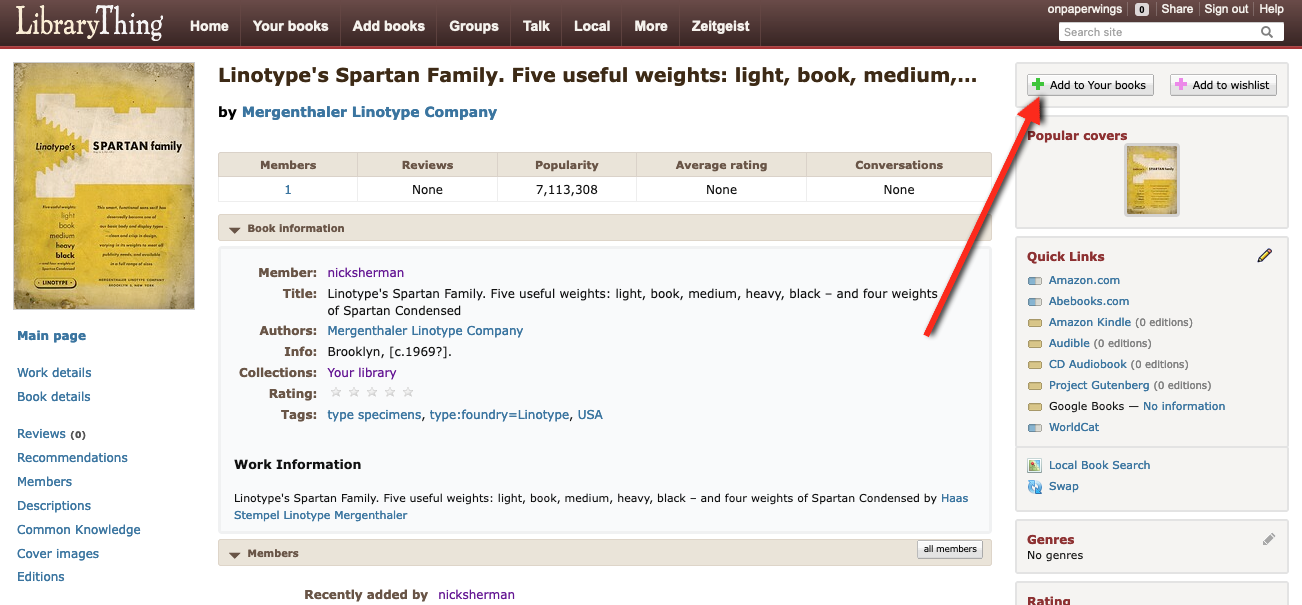
Although it seems like you can do this with the misleading “Add to Your Books” button, this simply starts the generic search process and often comes up with either ZERO results or MANY confusingly-similar results. Either way, the information that your trusted friend manually added (which is much better-quality data) is disregarded for whatever data the other source has.
So why did I stick with Library Thing, then? Because I have a faint hope that this lack of a feature will be resolved some day and will make LT a great platform for collections like my own. Myself and many other people have pointed out how strange this seems, but because LT is a free open source project, there is no guarantee that this will ever be changed. Ignoring the snarky LT replies, one can still hope.
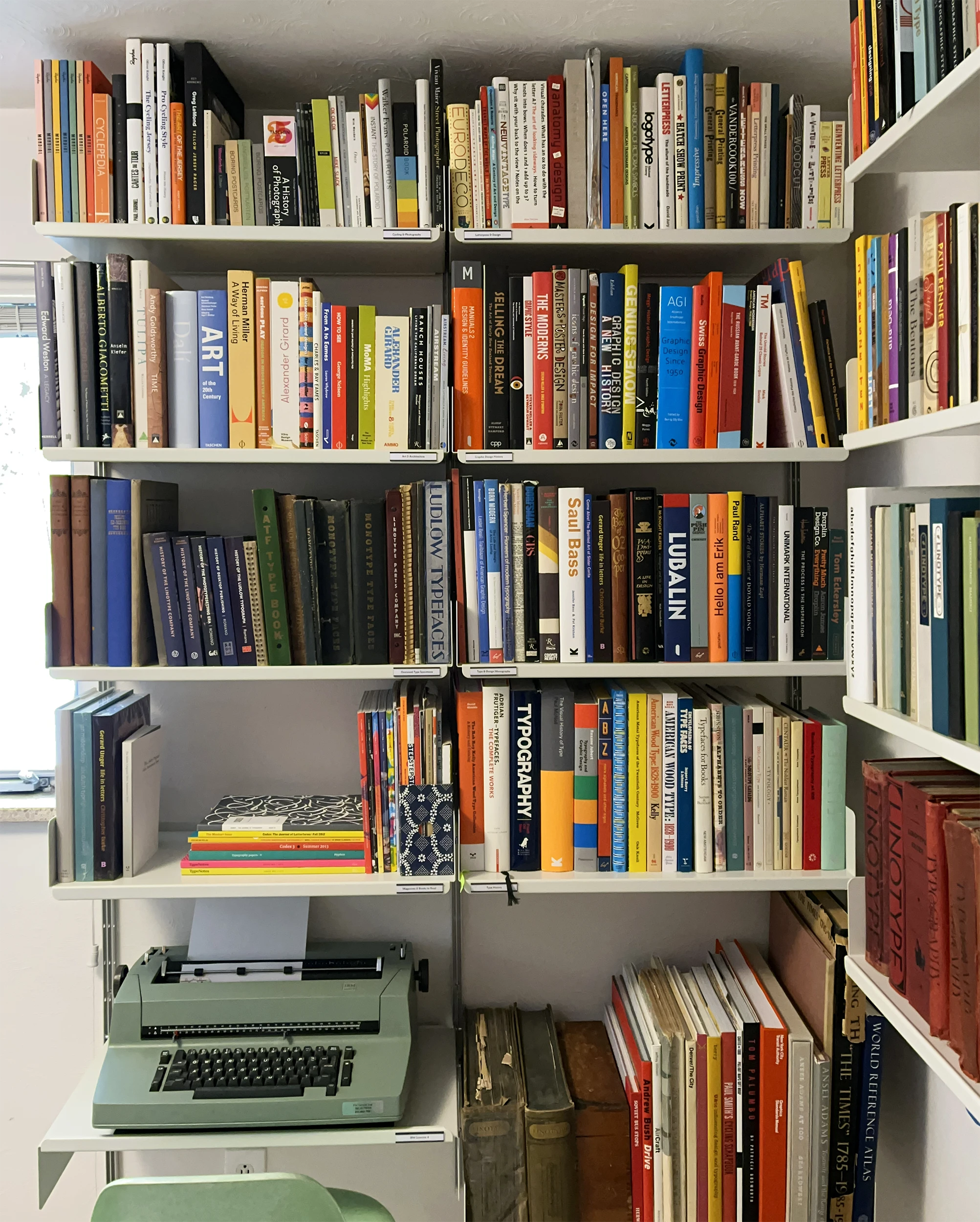
Time Commitment
Without a doubt, cataloging my entire library took a large investment of time. I would estimate that it took about 40 hours of work over four weeks to catalog my library of approximately 400 books.
Since all of my books were boxed up, I could take 30 minutes each morning for a few weeks to unload and catalog one box at a time. This way, I felt like I was making progress without being totally overwhelmed. Once I got everything up on my new shelves, I went through each shelf to confirm that everything was properly cataloged in LT and had a cover image.
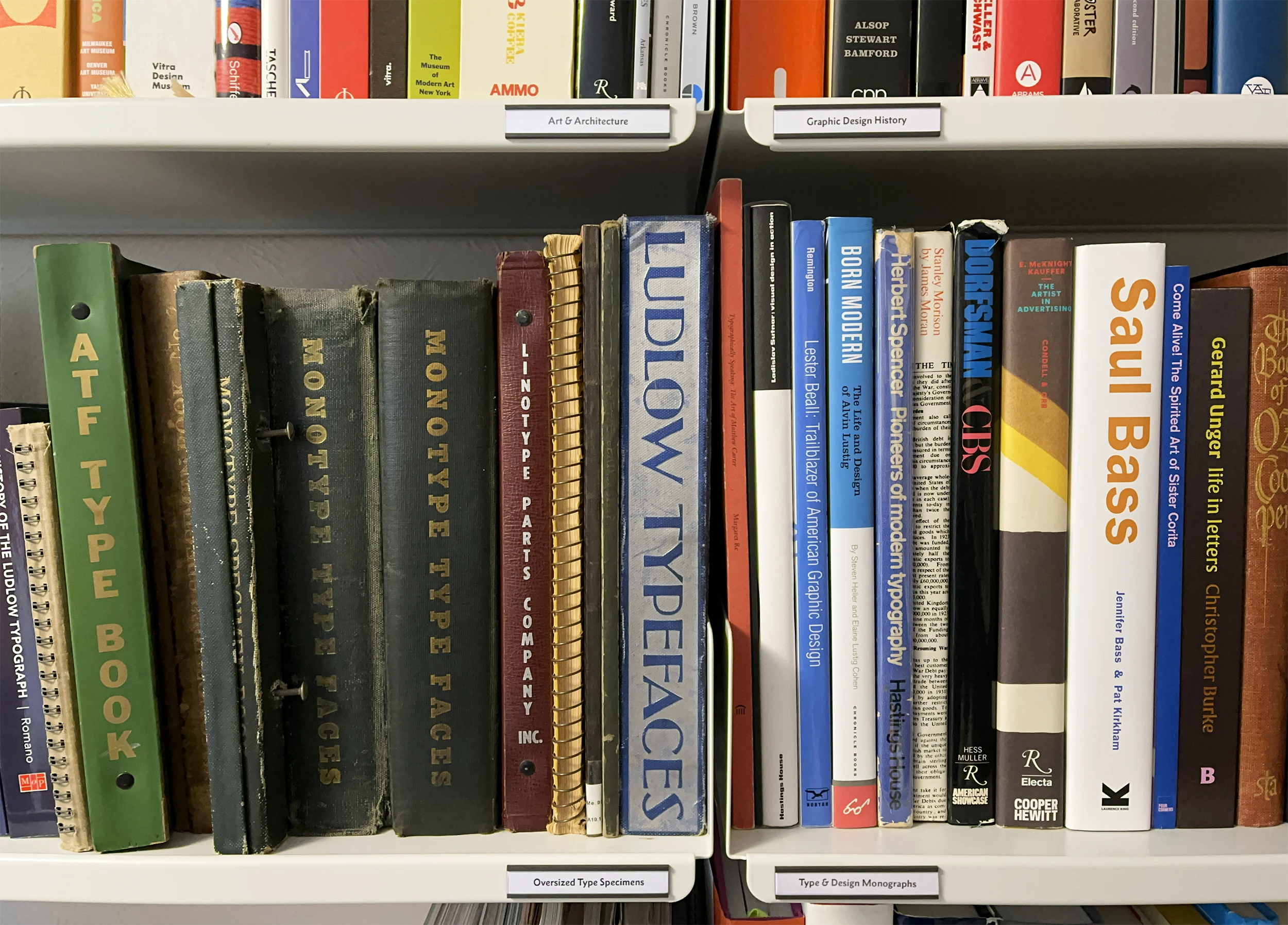
About 50% of the books in my collection had a barcode, which made them easy to add by scanning it using the LT iPhone app. The entries didn’t always have a good cover image, so I had to double-check and take a few photos myself, but that wasn’t too big of a hassle.
Another 20% of my books had an ISBN (but no barcode) so these had to be searched and added manually, which took about 2–3 minutes each. Because these books were less common, I found the book data about them to be less reliable, so there was more time spent adding book covers and correcting data.
The final 30% of my books were added completely manually where I entered all the information through the web interface, then separately photographed the covers using the LT iPhone app as a separate step. These took about 4–5 minutes total per book, which added up quickly.
I’d say that the final 30% of my books took approximately the same amount of time as the other 70% combined. This makes sense considering many are specimen catalogs and promotional materials printed by type foundries which were never meant to actually be collected in the first place.
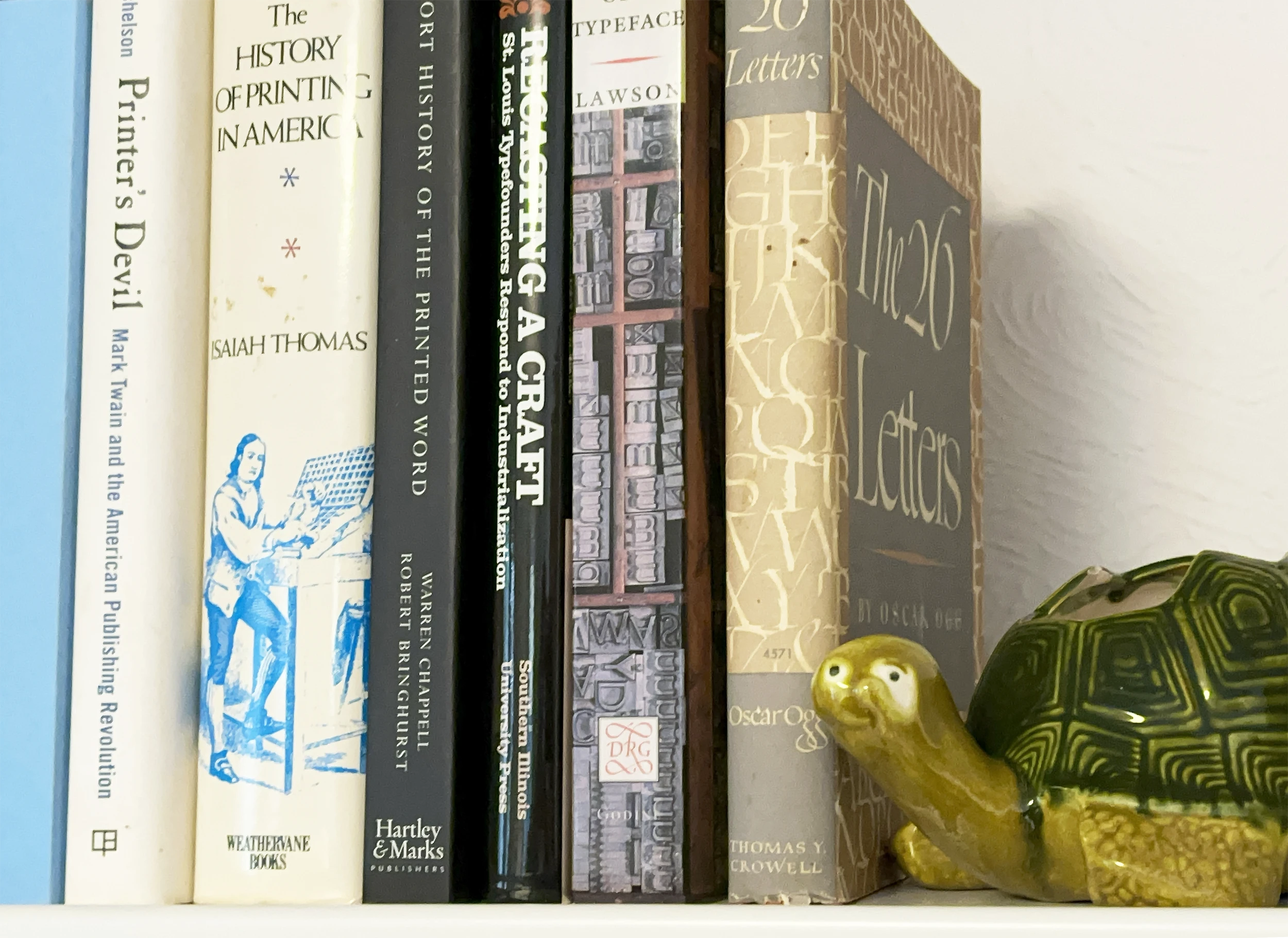
Final Thoughts
It is my (possibly silly) hope that having my library publicly cataloged will help others in the future. Perhaps someone will have a specific question about the Linotype or Ottmar Mergenthaler and cannot find the information online?
Instead of having to track down a difficult-to-find book, they can search my library and contact me asking something like, “Could you take a picture of the 10-Point Ionic No. 1 that is only available in the 1907 Linotype specimen book?” To which I would reply, “Of course! Here is the photo and let me know if you need a high-resolution scan or other info.”
Putting this hypothetical scenario aside, I now have a complete catalog of my books which I can export to a couple different file formats for further editing of the data, adding replacement value to get a better estimate for insurance, etc. With the big cataloging work out of the way, I will continue to add books to my LT library as I acquire them.
If you are interested in further details, make sure to reach out as I’m happy to share the good, the bad, and the ugly. I hope that others will add their collections to LT in the near future so we can have a single location for our small, obsessive community of book nerds.

